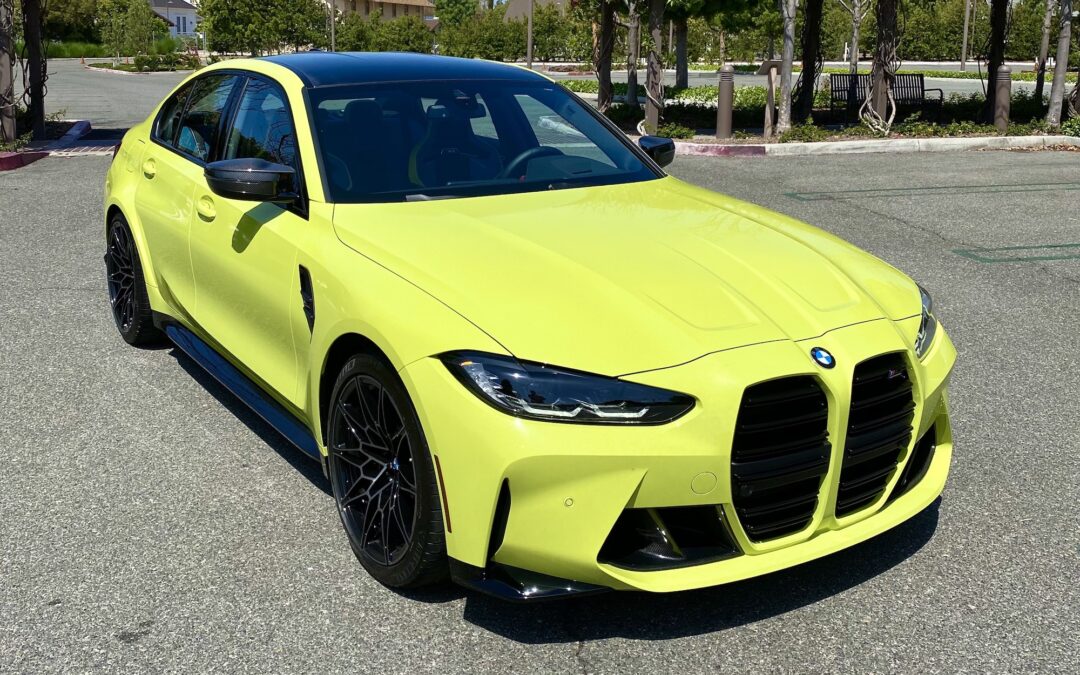Price (as tested) 💲: 97,645
Powertrain ⚙️: 3.0-liter twin-turbocharged inline-6
Output 💪: 503 hp/479 lb-ft of torque
Transmission 🕹: 8-speed automatic
0-60 MPH 🚦: 3.8 seconds
Top Speed 💥: 180 mph
MPGe (as tested) ⛽️: 16 city/23 hwy/19 combined
Curb weight ⚖️: 3,890 lbs
The 2021 model year introduces the sixth generation of BMW’s M3 since it debuted in 1986 as a homologation special. Built to accommodate DTM’s requirement that a certain number of road legal vehicles be produced, the first M3 was a stripped down, spiced up two-door coupe that quickly became a sports car icon. 35 years later, the G80 M3 shares few aesthetic and mechanical traits with its ancestor, but BMW’s M division promises the same purist driving spirit.
Like its predecessors, the latest M3 comes standard with rear-wheel drive and a manual transmission. Such a combination is rare for any vehicle in 2021, and among sport sedans, the latest M3 is a party of just one. Unlike its forebear, however, the new M3 Competition (packaged with an 8-speed automatic exclusively) packs over 500 horsepower from a twin-turbocharged six-cylinder engine, can sprint to 60 mph in under 4.0 seconds, and doesn’t run out of breath until 180 mph.
Stylistically, the new M3 is a large departure from the modest, handsome design of previous M sedans. But did BMW just give the new M3 an unfortunate makeover, or did it also change its characteristic driving charm? In this in-depth review, Miles picks over the 2021 BMW M3 Competition’s design, tech, and dynamics to decide if its better than rivals like the Mercedes-AMG C63 S Sedan, Audi RS5 Sportback, and Alfa Romeo Giulia Quadrifoglio.

